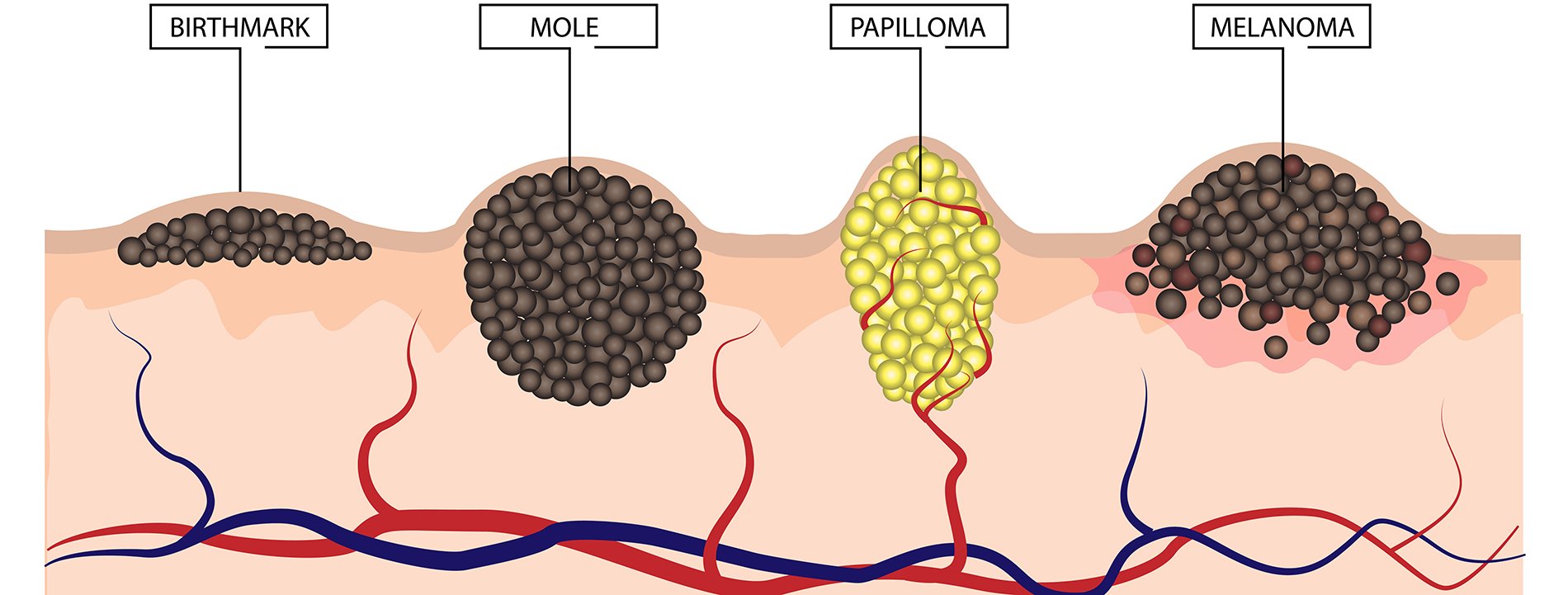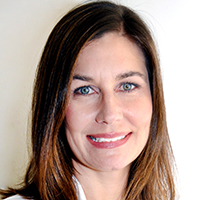Did you hear about the hockey fan who typed “Please go see a doctor” to the guy across the plexiglass? Is this an example of how there’s never a bad time to notify someone – even a stranger – about a potential urgent health issue?
I was impressed that the fan had no formal dermatology training and with the unusual way that she notified the man in the middle of a hockey game – via cell phone… I guess that’s the younger generation.
I was at the gym a couple weeks ago, and noticed my instructor had a basal cell skin cancer on her face. I told her she needs to see her dermatologist. She’s not my patient, but she did go in, and indeed it was a skin cancer.
Are there different types of melanoma, and which ones are most dangerous?
There are different forms of skin cancer – melanoma being one of the types. The more common types are basal cell carcinoma and squamous cell carcinoma. Those are called keratinocyte carcinomas because they arise from normal skin cells, or keratinocytes. With melanoma, it arises from the pigment cells, the melanocytes. I’ve had patients ask, “Will my basal cell turn into melanoma?” No, it won’t, because it arises from a different cell type in the skin.
Melanomas tend to be more aggressive than the keratinocyte carcinomas, because they are more likely to spread to lymph nodes or metastasize to other body areas. So, we do want to catch them early before they spread to lymph nodes or other sites.
In the hockey case, the equipment manager had stage II melanoma and the doctor immediately said it could be cured. At what stage does it become less curable?
When we stage melanoma, the first thing we do is look at the primary tumor, which can be the primary mole that has turned into melanoma. We look at how thick it is and how deep it has invaded the skin. We measure the thickness of the melanoma in millimeters and that’s called the Breslow Depth. A melanoma more than 1 millimeter thick is considered stage II. Stage II melanoma would not have spread to lymph nodes or distant organs.
When the primary tumor is more than 1 millimeter thick, we offer the patient a sentinel lymph node biopsy where we check the draining lymph nodes to make sure it hasn’t spread. This check determines our treatment – whether or not we want to offer bio-chemotherapies, a systemic treatment, rather than just a wide local excision.
What areas of the body are most susceptible to developing melanoma or other skin cancer? Are there surprising parts of the body where these problems occur?
We think melanoma is associated with intermittent sun exposure, so the most common spot in men is the back, and in women, it’s on the legs. Some of the differences may be due to clothing patterns. Men tend to take off their shirts to go swimming, and women may wear capri pants. But, certainly, melanoma can happen anywhere on the body.
People with darker skin also can get melanoma. They’re more likely to be acral lentiginous, which means hands and feet. People often don’t think to check their feet for moles, but you really do need to do a complete skin exam. You’re looking for moles that are changing in size, shape or color – especially bigger or darker. You’re also looking for the ugly duckling – the one mole that looks different than the other moles around it for whatever reason.
Dermatologists describe those changes by using the ABCDEs of melanoma. A is for asymmetry; B, border irregularity; C, color variation; D is diameter – bigger than a pencil eraser, although we like to catch them smaller than that; and E, for evolution or change.
Even if you have a small mole that’s changing, you want to bring that to the attention of your provider.
Is there an age range in which people are more susceptible to melanoma?
Melanoma in childhood is very rare, but it’s not so uncommon in older teenagers. I’ve diagnosed several 17-year-olds with melanoma, many of whom were tanning bed users. Tanning beds are a risk for melanoma. That’s what’s scary about melanoma: It’s a type of cancer that can happen in younger people. It’s one of the most, if not the most, common cancers of people in their 20s. Certainly, it’s more common in older individuals.
Can melanoma arise on seemingly normal skin?
Yes. I explain to my patients that when we do the skin exam, the goal is not to remove every mole, because that does not prevent melanoma. Two-thirds of melanomas arise in the skin from the melanocytes that just cause tanning, or your normal melanocytes. Only one-third arise from a pre-existing mole. We advise people to do mole checks because we want you to notice brown spots or darker-colored spots, which you might think are new moles. If it’s a mole that’s asymmetric, has varying color, border irregularity, is getting bigger, bleeding, or is an ugly duckling (different than others), that may indicate a problem.
How often should people do self-checks?
The American Academy of Dermatology recommends an annual skin exam. For patients who are low risk, their primary care provider can do the annual skin exam. If their provider is uncertain about the skin findings, they can refer the patient to a dermatologist.
A high-risk patient with many atypical moles, a personal history of skin cancer, or strong family history of skin cancer will want the annual skin exam done by a dermatologist.
At home, we recommend a monthly self-skin exam. You look at your moles, and make sure they haven’t changed from the previous month. Sometimes you can enlist a family member to look at your back or other hard-to-see areas. We don’t recommend checking every day because then you might not notice the subtle changes.
What are daily things people can do to protect their skin?
In Colorado, we’ve got a lot of skiers and people who enjoy the outdoors year-round, so I recommend using a sunscreen SPF 30 or higher every day on sun-exposed areas. I make it part of my daily routine. After I brush my teeth, I put on my moisturizer with an SPF even when I’m going to work and will be indoors, because you never know when you’ll end up walking between buildings or in and out of the car to the grocery store. Ten minutes a day adds up to 3,650 minutes a year, which, over the years, adds up.
If you know you’re going to be outside for a prolonged time, it’s important to wear sun-protective clothing, especially in the summer. Primary prevention would be sun avoidance – shade, hat, long-sleeved clothes, sunglasses.
What other resources do you recommend for information about sun safety and skin care?
The American Academy of Dermatology is helpful – www.aad.org.






